This guide focuses on manually removing viruses and malware from your computer.
Step 1:
Press the keys [Windows] + [R] to open the windows run. Type msconfig then press enter
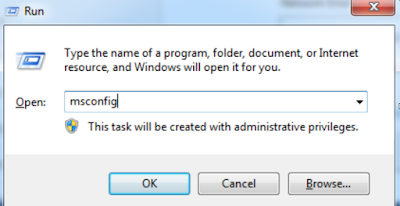
Then look for suspicious files. Here we see one. It’s an unknown manufacturer, and it also has a startup key that we’ve never seen until recently. Uncheck it from startup and/or from services.

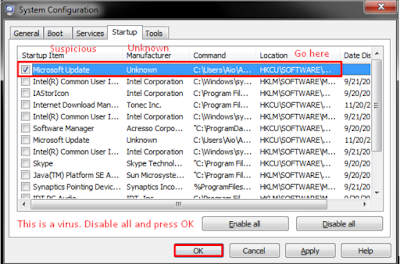
If you think you are being monitored. Open Command Prompt and do the following
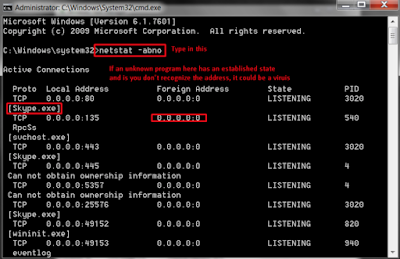
Step 2
Boot into safe mode. This can be done by checking the box in the “boot” tab in msconfig.
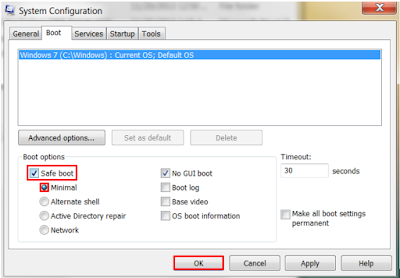
Step 3
Run msconfig in safe mode and we can see it’s checked because the virus is persistent. The virus will not be running, however, due to the fact that we are currently in safe mode.
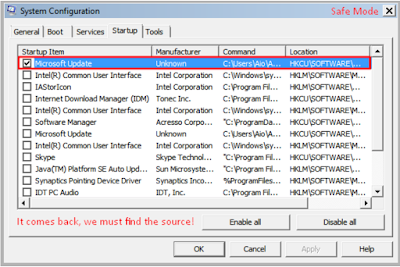
Navigate to the registry. We are doing this in safe mode because some viruses disable the registry.
Note: Be sure your folder options are set to show hidden files and folders

HKEY_LOCAL_MACHINE\SOFTWARE\Microsoft\Windows\CurrentVersion\Run
HKEY_LOCAL_MACHINE\SOFTWARE\Microsoft\Windows\CurrentVersion\RunOnce
HKEY_LOCAL_MACHINE\SOFTWARE\Microsoft\Windows\CurrentVersion\RunOnceEx
HKEY_LOCAL_MACHINE\SOFTWARE\Microsoft\Windows\CurrentVersion\RunServices
HKEY_LOCAL_MACHINE\SOFTWARE\Microsoft\Windows\CurrentVersion\RunServicesOnce
HKEY_LOCAL_MACHINE\SOFTWARE\Microsoft\Windows\CurrentVersion\Policies\Explorer\Run
HKEY_CURRENT_USER\Software\Microsoft\Windows\CurrentVersion\Run
HKEY_CURRENT_USER\Software\Microsoft\Windows\CurrentVersion\Runonce
HKEY_CURRENT_USER\Software\Microsoft\Windows\CurrentVersion\RunServices
HKEY_CURRENT_USER\Software\Microsoft\Windows\CurrentVersion\RunServicesOnce
HKEY_CURRENT_USER\Software\Microsoft\Windows\CurrentVersion\Policies\Explorer\Run
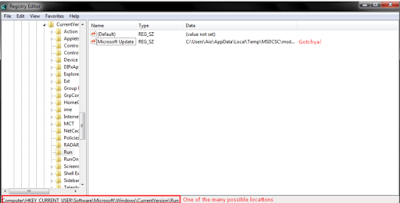
a) if you are unsure if it is a virus or not, right-click the suspected file{s} and click modify

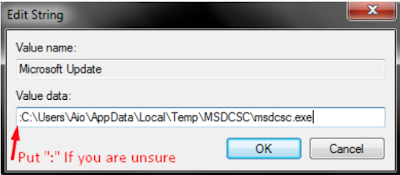

Be certain it is gone; it shouldn’t even be listed as a startup item anymore.

To be certain, use CCleaner to scan the registry and fix any issues there are.
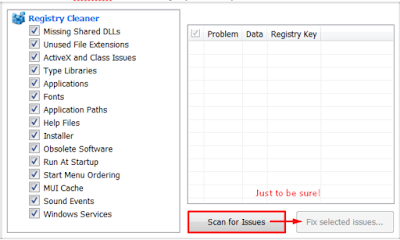
Hopefully, this should’ve gotten your computer rid of any viruses. It is recommended to download the latest version of an Anti-Virus program and scan your computer fully even after doing this.
Comments
Post a Comment